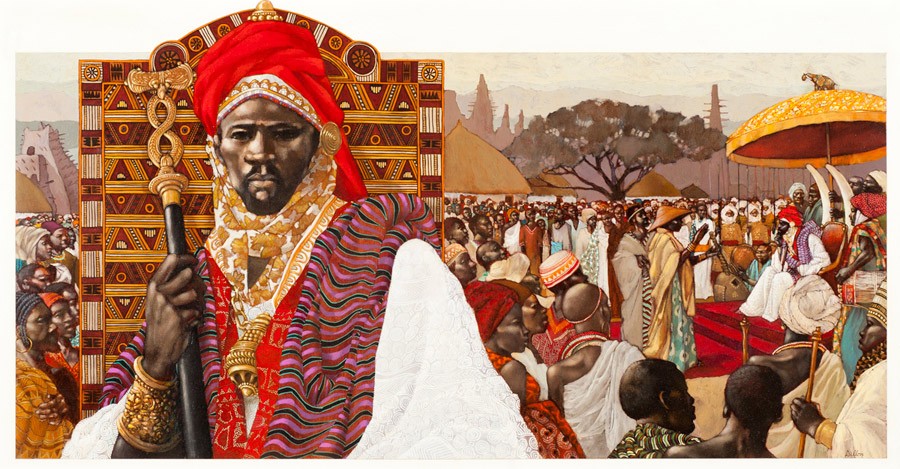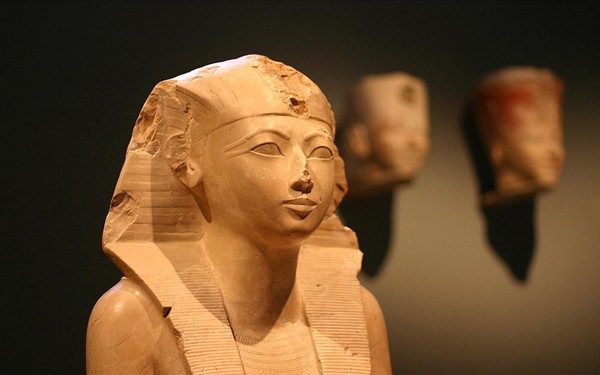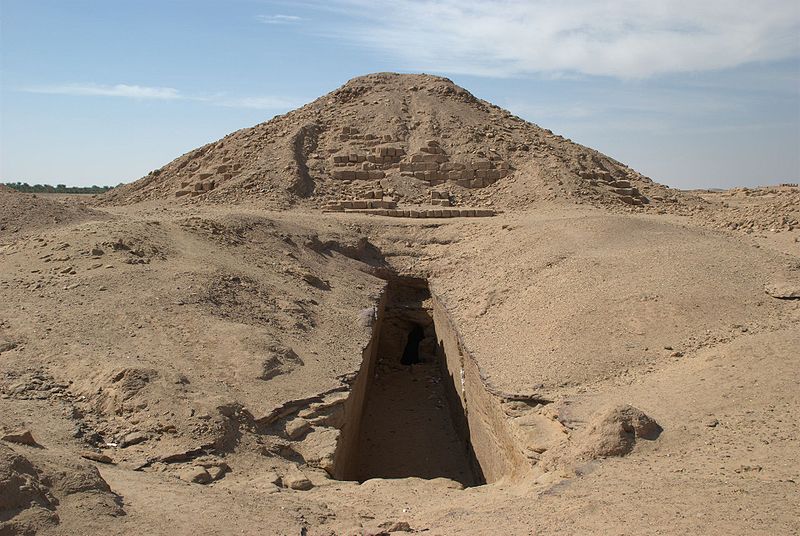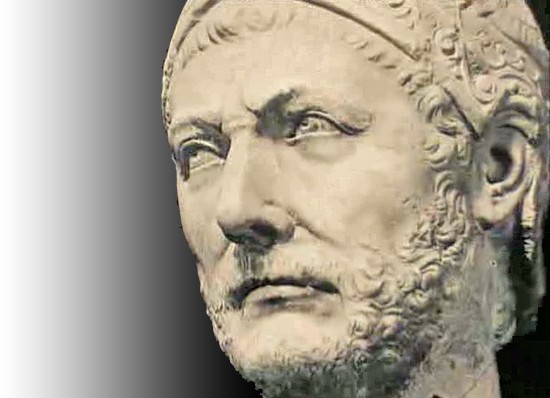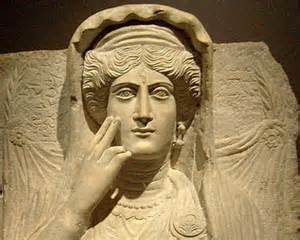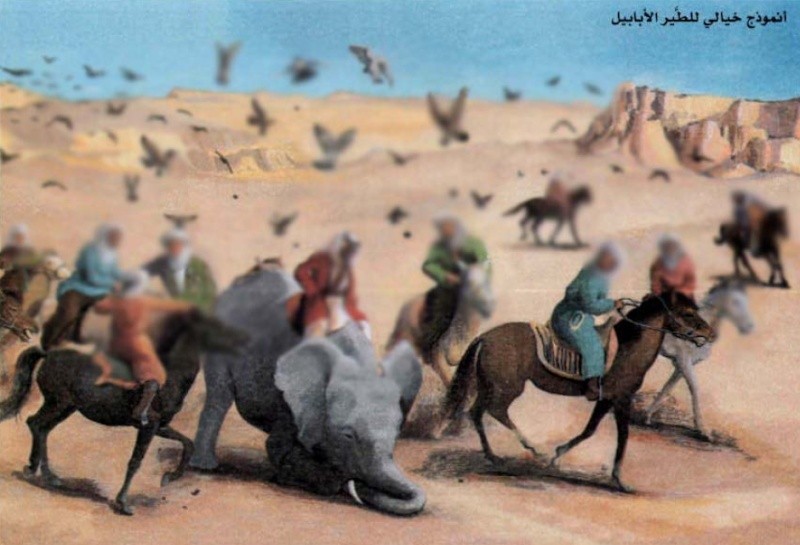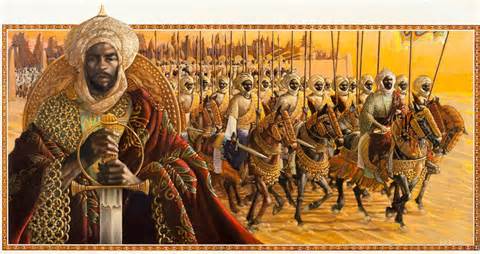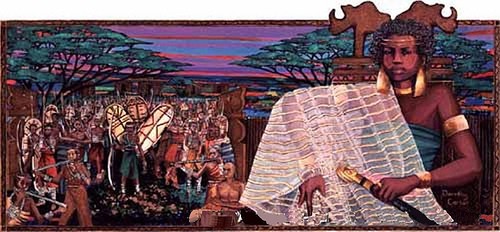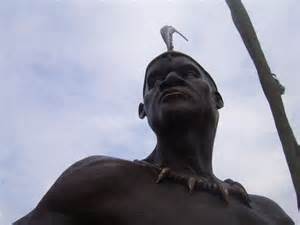Africa has produced some of the greatest warriors and leaders that have graced the earth, these war lords are not only exceptional Men that are good at hand to hand combat but who were also great leaders and brilliant strategists, here are just ten of the famous African warriors that have helped to make the continent’s history, listed chronologically.
Well Known African Warriors That Shaped African History
Hatshepsut (c1508-1458BC, 18th Dynasty, Egypt)
Hatshepsut was one of the greatest rulers of Ancient Egypt, being their longest-reigning woman pharaoh, the earliest ‘great woman’ of which history can tell us, and is certainly one of the most famous African warriors. Originally thought to have merely been regent, then co-regent, for her stepson and nephew, Thutmose III, after the 1479BC death of her husband, Thutmose II, she is now accepted to have actually been pharaoh in her own right from at least 1472BC until her death in 1458BC – contemporary records show she definitely was pharaoh in 1472BC so she must have become so sometime during the previous seven years. During her reign, she greatly increased the wealth of Egypt by establishing trade networks and funding expeditions to ‘far off lands’ such as the ‘Land of Punt’ (around the mouth of the Red Sea) and, of course, like all pharaohs, commissioned many buildings, monuments and statues. No record has been found of the reason for her death, aged ~50, but medical investigations indicate she had bone cancer and diabetes, either of which could have been to blame. After her death, many of the stone representations of her were defaced by simply chiseling off the features of the face; it was thought this was done by Thutmose III, to remove her from the official records in a fit of angry revenge, but it is now thought more likely that it might have been done by his son, Amenhotep II, to help secure his right to the throne, as opposed to any of Hatshepsut’s descendants who might have a claim as strong or stronger. Amenhotep is also known to claimed many of her accomplishments for himself.
Thutmose III (1481-1425BC, aka Thutmosis/Tuthmosis/Thothmes III, Egypt)
Thutmose III another famous African warrior, was Hatshepsut’s stepson and nephew and took the throne on her death in 1458BC. Or it might be that he reigned from the age of two (quite an achievement!) for nearly 54 years, allowing Hatshepsut to share his throne until he was 23 years old (when she died), if you accept the idea that Hatshepsut was his regent rather than ruling in her own right. Once allowed to take his throne, however, he proved himself an able ruler and military genius who substantially increased his empire to make Egypt one of the great powers at the time. He made many raids, captured some 350 cities and conquered everywhere from the Syria to Canaan and Nubia in a series of campaigns, mostly in a ‘town by town’ method whereby each town conquered was another small fraction of a country until he had enough of a percentage that the opponent gave in. This successful military activity was largely enabled by improvements in war weaponry at the time, and earned for him the reputation of being one of Egypt’s greatest warrior pharoahs – all of which was recorded on the walls of the Karnak Temple of Amun by his royal scribe, Thanuny, enabling us to know more about Thutmose III than almost any other Egyptian ruler.
Piankhy (753-721BC, founder of 25th Dynasty, Egypt)
Piankhy, or Piye, a king of Kushi in Nubia (now Sudan), became Pharaoh of all Egypt when the current rulers fell to squabbling and allowed him to gradually take over Upper Egypt, then Middle and Lower Egypt as well, finally conquering the entire country when he took Herakleopolis, Hermopolis, Memphis and some other cities, and received the surrender of their rulers after a five-month siege at Hermopolis. Tefnakht, the overall Pharaoh, retreated to an Nile Delta island and wrote to concede defeat but refused to do so personally. Piye didn’t bother to force his rule on some of the smaller areas of Egypt, however – it was left to his successor, his brother Shabaka, to finally clean up and bring the Egyptian empire back under one rule. Piye was, however, passionate about one thing – the worship of his god Amun, in which effort he renewed and restored the almost forgotten Great Temple of Amun, until then being ignored at Gebel Barkal, and this temple contains many scenes of Piye celebrating the 30th jubilee of his accession, around a year before his death in 721BC.
Hannibal (247BC – 183/182BC, Carthage)
Almost everyone has heard of Hannibal of Carthage, generally considered to be one of the greatest and one of the most famous African warriors, not just of Africa but in the world, and throughout history. He was one of a very warlike family – his father, brother-in-law and two younger brothers were also notable warriors. On the north coast of Africa, Carthage (now the northern part of Tunisia) was Hannibal’s starting point to conquer most of the countries that faced into the Mediterranean over his lifetime. His most famous adventures used elephants to help get his armies across the Pyrenees and the Alps, epic journeys that cost the lives of many of his soldiers and most of the elephants, for whom the conditions were too harsh. The war that followed was a ‘world war’ in that it involved most of the population of the ‘known world’ at the time and almost every Roman family lost one or more members to Hannibal and his Carthaginian forces. He always swore he would never fall into his enemies’ hands, and when as an old man of nearly sixty-five years he was finally facing this happening, he took poison (carried with him for a long time in a ring) rather than accept it.
Zenobia (AD240- sometime after 274, Palmyrene Empire)
Zenobia, born in AD240, was the second wife of King Septimius Odaenathus of Roman Syria’s Palmyrene Empire, and became Queen in his stead when he died in 267. Over the next couple of years she expanded the empire, then conquered Egypt and ruled there until she was defeated and taken to Rome as a hostage by Emperor Aurelian in 274. After that, accounts differ as to what happened to her – they range from her being beheaded the same year, through dying of illness or hunger strike, to being released (because Aurelian was impressed by her beauty and dignity), granted a villa in Tibur (Tivoli in Italy, now), becoming a well-known philosopher, marrying a Roman senator, and giving him several children!
Abraha al-Ashram (reigned c AD525 – at least 553, King of Saba (Yemen), actual dates of birth and death unknown)
Ethiopian Christian Abraha’s birth and origins are shrouded in mystery, yet he made this list as one of the most famous African warriors that shaped history; the first thing that is known about him is that he was a commander of one of King Kaleb of Axum’s armies who sacked Najran (now Saudi Arabia) in approx AD520. He led 100,000 or so men (and hundreds of elephants) to take the city of Sana’a, in Saba, and on the suicide of its rightful ruler seized power there himself. However, he refused to pay tribute to Kaleb and earned the ‘al-Ashram’ part of his name (‘Scarface’) when he was injured killing Kaleb’s general, Ariat, in a duel. Kaleb then sent an army to subdue him, which joined Abraha instead and fought with him to defeat a second army, after which Kaleb let it go and Abraha was accepted as King of Saba. A zealous Christian, Abraha built a great cathedral at Sana’a (‘to rival the Kaaba at Mecca’) and promoted his religious cause vigorously all through Arabia. In AD570, he led a military expedition with several elephants against the ‘pagans’ at Mecca – possibly specifically with the aim of destroying the Kaaba – and that year is now known as the ‘Year of the Elephant’. Although his death is shrouded in as much mystery as his birth, he is thought to have been injured in the battle at Mecca and to have died soon after of his wounds.
Popular African Warriors that Shaped Our History
Yakub al-Mansur (c 1149-1199, aka Moulay Yacoub, Morocco)
Abu Yusuf Ya’qub al-Mansur (to give him his full name) was the third Caliph of the Almohad dynasty of Moorish rulers of Iberia and succeeded his father, who was murdered in Spain, in 1184. His name, al-Mansur, means ‘the Invincible’ and he earned it through never losing a battle in all his many military campaigns, and defeating every enemy he had – in fact, by winning all these battles he was able to halt the spread of the Christian faith in the Iberian peninsula of Europe, at least temporarily. He was also a great patron of the arts – philosophy, the sciences and architecture all flourished during his rule, as did the traders – and he built the great Mosque at Granada and Cordova, still a famous landmark today. After revenging himself on the Spanish for his father’s death (by totally subjugating the country) he went back to Africa, and his Christian subjects in Spain started revolts and recaptured many of the conquered cities. After he came back to Spain and re-conquered them all, he took many thousands of the Spanish back to Africa and sold them as slaves, but again, while he was gone, back in Spain they put together another massive army to fight him. This time when he came back he killed about one hundred and fifty thousand (half the opposing army) in the battle of Alarcos on 18 July 1195, and afterwards stripped the country of just about everything of any value. They didn’t try it again.
Sonni Ali (? – 1492, aka Sunni Ali, Sonni Ali Ber, “The Great”, Songhai, Empire of Timbucktoo)
Sonni Ali had been well schooled in the methods of warfare by the time he became the Sonni dynasty’s 15th consecutive ruler in 1464 (the 1st began in 1335).These are what made him one of the most famous African warriors: In his first few years as king of the Songhai he repulsed or defeated several neighbors and in 1469 conquered the Tuareg who occupied Timbucktoo, thereby adding the city to his empire. By 1476, he had broken free of the Mali empire that had ruled his country for and controlled a large area from Niger delta to the southern lakes region, with a ‘navy’ keeping his trade routes open and the conquered areas peaceful. Remembered differently by different groups – probably having a lot to do with which side the authors were on – Sonni Ali was a great hero according to the Songhai oral tradition, a man of the people and a great military commander. The Islamic Chronicles, on the other hand, see him as capricious, cruel, impious and an unscrupulous tyrant who massacred hundreds in his military campaigns and ordered executions while in temper tantrums. It is said he died when he was poisoned in 1492 by one of his commanders, Muhammad Ture, who then took out his son, Sonni Baru, in a coup d’etat a year later and started a new dynasty of rulers.
Ann Nzingha (c 1583 – December 1663, Matamba and Ndongo kingdoms)
Also known as Queen Njinga Mbande or, after she became a Christian, Ana de Sousa Nzingha Mbande, Nzinga was a great queen of the Matamba and Ndongo kingdoms in southwest Africa. She first appeared in historical records as an envoy for her brother at a peace conference in Luanda in 1599, but following his suicide (or perhaps poisoning by the Portuguese, with whom he was at war), she becomes regent for his young son, Kaza, then allegedly kills Kaza (‘for his impudence’) and takes the crown herself around 1626. The war against Portugal continued for decades, sometimes with the Dutch helping them, both sides winning some and losing some, until some thirty years later in 1657, when Nzinga signed a peace treaty and devoted the remainder of her life helping to resettle former slaves and enabling child-bearing for the women. She died peacefully at 80 years old, and although with her gone the Portuguese moved faster to occupy southwestern Africa, they didn’t actually get full control until the twentieth century.
Shaka kaSenzangakhona (c 1787 – September 1828, Zulu kingdom)
Shaka kaSenzangakhona was the greatest leader of the Zulu kingdom, being influential in the uniting of many of the Nguni people into his Zulu kingdom and thus creating a nation that ruled over a large portion of Southern Africa. He himself was a brilliant statesman and military genius of great vigor whose reign was marked equally for his innovative reforms – and his brutality. He was assassinated by two of his half-brothers, Dingane and Mhlangana – but not on their first attempt! Historians describe him variously as a ‘uniter’ or a ‘usurper’, depending on their preference, and interest in him is such that research into his methods and character still goes on today.
